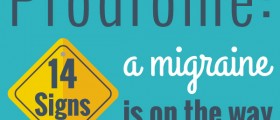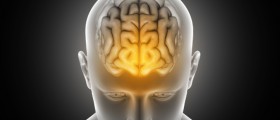
Abdominal migraine is a type of migraine that generally affects children with abdominal pain. The condition is believed to be triggered by abnormal brain waves which eventually results in a disorder of intestinal motility. This particular type of migraine most commonly affects children under the age of 12 and especially those with a family history of migraines. Girls are more prone to abdominal migraines than boys.
Causes of Abdominal Migraine
There are two chemicals responsible for the onset of abdominal migraines, histamine and serotonin the same as those accompanied with headache migraines. The pain is generally associated with some psychological triggers. Foods such as chocolate, processed foods etc. as well as stress and anxiety may be trigger factors for abdominal migraines.
Symptoms of Abdominal Migraines
The condition basically is an abdominal pain that may include nausea, vomiting, and loss of appetite. The child is pale and the pain is in many cases located in the middle of the abdomen, around the belly button. The pain is moderate to severe and may linger from 2-3 hours. It tends to recur in two or three days. Some children, additionally complain about dizziness and headaches and may show signs of irritability.
Apart from the previously mentioned, children may also experience visual disturbances, flashing lights, numbness or tingling sensation around the mouth or other parts of the body (arms). The speech can be slurred and there is also a chance of general muscle weakness.
Diagnosis and Treatment for Abdominal Migraine
Unfortunately, there are no specific tests which may help in diagnosing abdominal migraine. The final diagnosis can be set only with the assistance of a detailed study of the symptoms, a family medical history of migraines. One more test can be of major importance in diagnosing abdominal migraine. It is called EEG (electro encephalography).
The treatment for abdominal migraine does not differ much from standard treatment for migraines. The attacks can be prevented with propranolol (a beta blocker). One more medication prescribed in children in cyphoheptadine (an anti-histamine). Paracetamol and ibuprofen are able to reduce pain during the attacks. A well experienced pediatrician chooses the most convenient medication for a child.
The attacks can be successfully prevented. Preventive measures include elimination of potential triggers of the attacks such as consumption of certain foods, stress and anxiety. The parents may identify the food which triggers the attack and remove it from a child's diet. Plenty of sleep and rest is also vital for both, proper growth and development and prevention of abdominal migraine attacks.














Your thoughts on this
Loading...